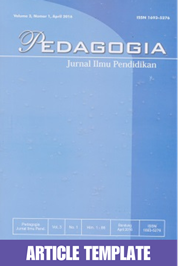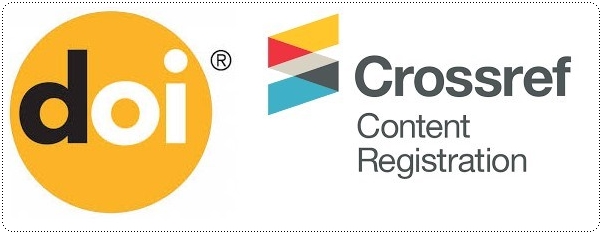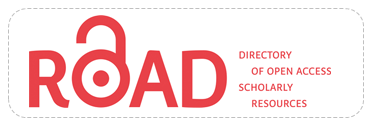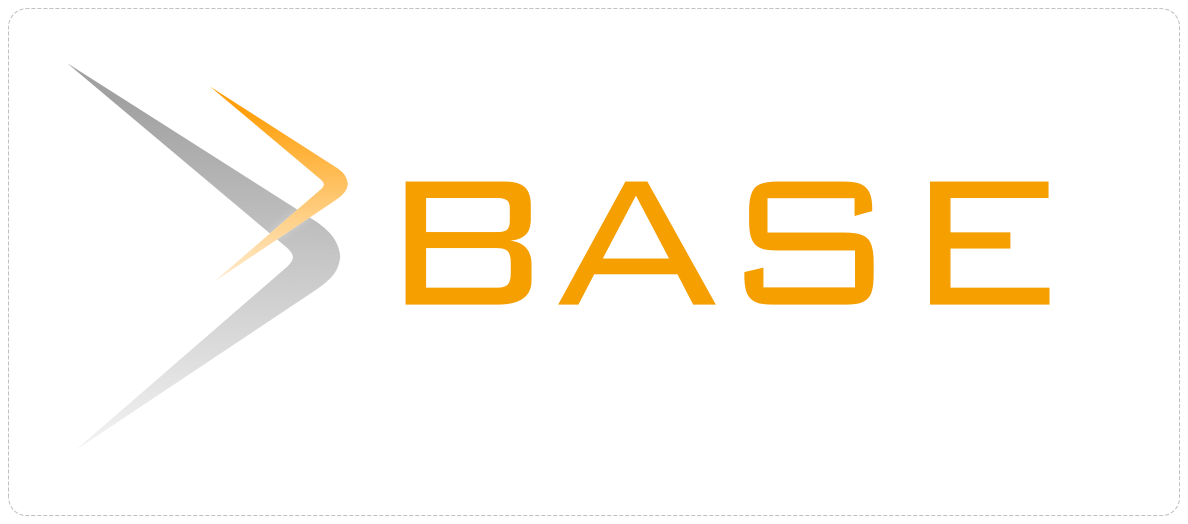The Effectiveness of the Mnemonic Method on the Ability to Read Hijaiyah Letters in Mentally Disabled Children
Abstract
Keywords
Full Text:
PDFReferences
Afrianto, I., Faris, A. F., & Atin, S. (2019). Hijaiyah letter interactive learning for mild mental retardation children using Gillingham method and augmented reality. International Journal of Advanced Computer Science and Applications, 10(6), 334–341.
Alucyana, A., Raihana, R., & Utami, D. T. (2020). Peningkatan kemampuan membaca huruf hijaiyah melalui kartu huruf hijaiyah di PAUD. Al-Hikmah: Jurnal Agama dan Ilmu Pengetahuan, 17(1), 46-57.
American Psychiatric Association, A. P., & Association, A. P. (2013). Diagnostic and statistical manual of mental disorders: DSM-5. Washington, DC: American psychiatric association.
Astuti, A. W., Drupadi, R., & Syafrudin, U. (2021). Hubungan penggunaan media kartu huruf dengan kemampuan membaca permulaan anak usia 5-6 tahun. KINDERGARTEN: Journal of Islamic Early Childhood Education, 4(1), 73-81.
Azwar, S. (2009). Efek seleksi aitem berdasar daya diskriminasi terhadap reliabilitas skor tes. Buletin Psikologi, 17(1), 28-32.
Carr, A., Linehan, C., O’Reilly, G., Walsh, P. N., & McEvoy, J. (2016). The handbook of intellectual disability and clinical psychology practice. In The Handbook of Intellectual Disability and Clinical Psychology Practice (Second edi). Milton Park: Routledge.
Fadila, A. H. N., & Al Irsyadi, F. Y. (2021). Game edukasi mengenal huruf hijaiyah untuk anak tunarungu dan tunagrahita (Studi Kasus: Yayasan Asuh Anak-Anak Tuna) (Doctoral dissertation, Universitas Muhammadiyah Surakarta).
Fiqhi, I. A., Diana, R., & Wita, I. (2020, July). Hijaiyah letters sign language recognition for deaf and hearing impaired children based on principal component analysis method. In Journal of Physics: Conference Series, (Vol. 1569, No. 3, p. 032077). IOP Publishing.
Hasan, R. O. (2016). Meningkatkan kemampuan mengenal huruf hijaiyah melalui media papan magnetik pada anak tunagrahita sedang kelas VI SLB Karya Padang. E-JUPEKhu (JURNAL ILMIAH PENDIDIKAN KHUSUS), 5(2), 115-125.
Hidayati, S., & Sopandi, A. A. (2013). Meningkatkan kemampuan membaca huruf hijaiyah melalui macromedia flash player pada anak tunagrahita ringan. Jurnal Penelitian Pendidikan Khusus, 2(2), 300-310.
Ishmi, D. (2021). Pelaksanaan pembelajaran pendidikan agama islam bagi anak berkebutuhan khusus tunagrahita di masa pandemi Covid-19. WARAQAT: Jurnal Ilmu-Ilmu Keislaman, 6(1), 12-23.
Jaiswal, P. (2019). Using learner-centered instructional approach to foster students' performances. Theory and Practice in Language Studies, 9(9), 1074-1080.
Kayaaltı, M. (2018). Mnemonic technique-An effective vocabulary teaching method to plurilingual students. Modern Journal of Language Teaching Methods (MJLTM), 8(5), 388-400.
Kementrian Sosial. (2021). Sistem informasi penyandang disabilitas - Kementerian Sosial RI. https://simpd.kemsos.go.id/
Matlin, M. W. (2016). Kognitif (third). California: Harcourt Brace Publishers.
Ni, L. B., & Hassan, N. A. B. (2019). The use of mnemonic and mathematical mnemonic method in improving historical understanding. International Journal of Educational and Pedagogical Sciences, 13(2), 93-97.
Novelia, S., & Hazizah, N. (2020). Penggunaan video animasi dalam mengenal dan membaca huruf hijaiyah. Jurnal Pendidikan Tambusai, 4(2), 1037-1048.
Parima, F., Siros, I., & Ali, S. (2018). The effects of mnemonic vocabulary instruction on content vocabulary learning of students. Journal of language and education, 4(1), 42-62.
Prihartini, Y., Wahyudi, W., Nuraini, N., & Ds, M. R. (2018). Penerapan konsep matematika dalam pembelajaran bahasa arab pada FTK Di UIN STS Jambi. Tarbawi: Jurnal Ilmu Pendidikan, 14(2), 15-28.
Purnamasari, R. (2018). Strategi pembelajaran mnemonic untuk meningkatkan memori siswa. Sipatahoenan, 4(2), 125–138.
Rachmayanti, I., & Alatas, M. A. (2020). The learning of arabic alphabets for special needs students in elementary school. Izdihar: Journal of Arabic Language Teaching, Linguistics, and Literature, 3, 79–94.
Rayner, K., Pollatsek, A., Ashby, J., & Clifton Jr, C. (2012). Psychology of reading. Psychology Press.
Reduzan, N. H., Languages, F., & Perguruan, U. (2020). Mnemonic memory techniques improves writing skills in Malay. Ilkogretim Online, 19(4), 20-23.
Rochyadi, E. (2012). Karakteristik dan pendidikan anak tunagrahita. Pengantar Pendidikan Luar Biasa, 1–54.
Sari, D. R., Indramurti, & Armani. (2019). Peningkatan keterampilan taplak meja menggunakan multimetode pada siswa tunagrahita ringan. Jurnal Pendidikan Kebutuhan Khusus, III(2014), 18–23.
Sari, R. R. (2018). the Use of keyword and imagery mnemonic for vocabularies learning for afl students. Izdihar, 1(2), 129–136.
Sbai, M. A., Biadil, M. El, Mohajir, M. El, & Nahli, O. (2018). The use of ICT in dealing with learning disabilities: A literature review with a focus on reading arabic texts. Colloquium in Information Science and Technology, CIST, 2018-Octob(October), 415–421.
Siswanti, D. (2012). Meningkatkan kemampuan membaca huruf hijaiyah melalui metode vakt dengan media plastisin bagi anak tunagrahita ringan. Jurnal Penelitian Pendidikan Khusus, 1(3), 122-133.
Sumaryanti, S. (2010). pengembangan model pembelajaran jasmani adaptif untuk optimalisasi otak anak tunagrahita. Jurnal Kependidikan Penelitian Inovasi Pembelajaran, 40(1), 29-44.
Thompson, S. C. (2020). 26 The Role of Personal Control in Adaptive Functioning. The oxford handbook of positive psychology, 368.
Wei, Z. (2015). Does teaching mnemonics for vocabulary learning make a difference? Putting the keyword method and the word part technique to the test. Language Teaching Research, 19(1), 43-69.
DOI: https://doi.org/10.17509/pdgia.v20i2.47281
Refbacks
INDEXED BY

This work is licensed under a Creative Commons Attribution-ShareAlike 4.0 International License















